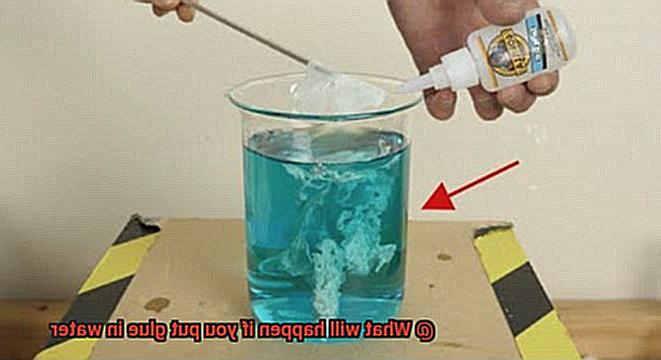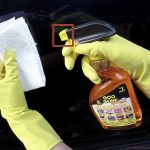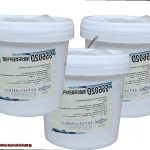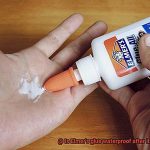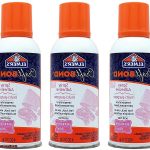Have you ever wondered what would happen if you mixed glue with water? Would it create a fascinating science experiment or a disaster waiting to happen? Perhaps, you’ve already tried it and want to know more about the chemical reaction that occurs. Well, prepare to dive into the captivating world of glue and water.
When glue and water are combined, they undergo a chemical reaction that results in a new mixture with unique properties. The amount of water used and the type of glue can affect the outcome, ranging from a thick paste to a runny liquid. But why does this happen?
The key ingredient in most glues is polymer – long chains of molecules that provide its sticky nature. When mixed with water, these chains break down, allowing the glue to spread more easily. As the two substances interact further, they form a colloid – neither solid nor liquid but something in between.
This extraordinary colloidal mixture has many practical applications such as adhesives and coatings for paper and textiles. It can also be used for artistic projects like adding textures and finishes to paintings or sculpting with glue dough.
So, let’s dive in now.
The Effect of Water on Glue
Contents
- 1 The Effect of Water on Glue
- 2 Different Types of Glue and Their Solubility in Water
- 3 How Dissolving Glue in Water Affects Its Adhesive Properties
- 4 How Adding Water to Glue Can Change Its Viscosity
- 5 How Adding Too Much Water Can Affect the Adhesive Properties of Glue
- 6 Using Diluted Glue for Different Applications
- 7 Conclusion
It’s a fascinating question with a complex answer that largely depends on the type of glue you’re using. Glue is a versatile adhesive that can be used to bond various materials such as paper, plastic, and fabric together. However, when mixed with water, the properties of glue can change, affecting its bonding strength.
Some types of glue, like PVA glue, are water-soluble. When exposed to water, the glue breaks down and loses its adhesive properties. This means that it becomes less sticky and weaker. On the other hand, some types of glue like Cyanoacrylate (CA) or Super Glue are moisture-cured and need water vapor to cure and set properly. These glues can become stronger when exposed to moisture or water vapor.
Interestingly, adding water to glue can also cause it to thicken. Water causes the polymers in the glue to swell and expand, making the glue more viscous. However, if too much water is added, the glue can become too thick to use effectively.
In some cases, adding water to glue can increase its adhesive properties, particularly when using it on porous materials like paper or fabric. Understanding how these properties can affect the effectiveness of the glue is essential when using it for different applications.
Different Types of Glue and Their Solubility in Water
When it comes to glues, not all are created equal.
Different types of glue have different solubility in water, with some easily dissolved in water and others impervious to it. Water-soluble glues like PVA glue, school glue, and white glue can dissolve in water, making them the ideal choice for projects that require frequent adjustments or corrections.
These glues are often used for paper-based materials such as cardstock, paper mache or creating collages. On the other hand, non-water-soluble glues like superglue, epoxy glue, and cyanoacrylate glue aren’t dissolved in water.
These types of glues are perfect for heavy-duty repairs or bonding plastics and metals as they provide a strong bond that won’t be affected by moisture or water.
How Dissolving Glue in Water Affects Its Adhesive Properties
Glue is a powerful adhesive that can bond objects together with ease, but it’s not invincible. When glue is exposed to water, it can weaken and lose its effectiveness.
So, how does this happen? Well, water molecules can interfere with the intermolecular forces that hold the glue together. This interference can lead to weaker bonds between materials and less effective adhesion.
One of the most significant ways dissolving glue in water impacts its adhesive properties is by reducing its viscosity. Viscosity refers to the thickness or stickiness of a substance, and it’s crucial in determining how well glue can bond materials together.
When glue is dissolved in water, the water molecules can break down the long polymer chains that give glue its thickness and strength. This can cause the glue to become runny or thin, making it less effective at sticking materials together.
Dissolving glue in water can also change its chemical composition. Most types of glue are made up of various chemicals and compounds that work together to create a strong bond. However, when these chemicals come into contact with water, they can react and break down into different compounds. This change can alter the chemical composition of the glue, making it less effective at bonding materials together.
When it comes down to it, exposing glue to water will inevitably cause it to lose some of its adhesive properties. The extent of this loss will depend on various factors, such as the type of glue and how much water it’s exposed to. In general, it’s best to avoid dissolving glue in water unless it’s specifically designed for this purpose.
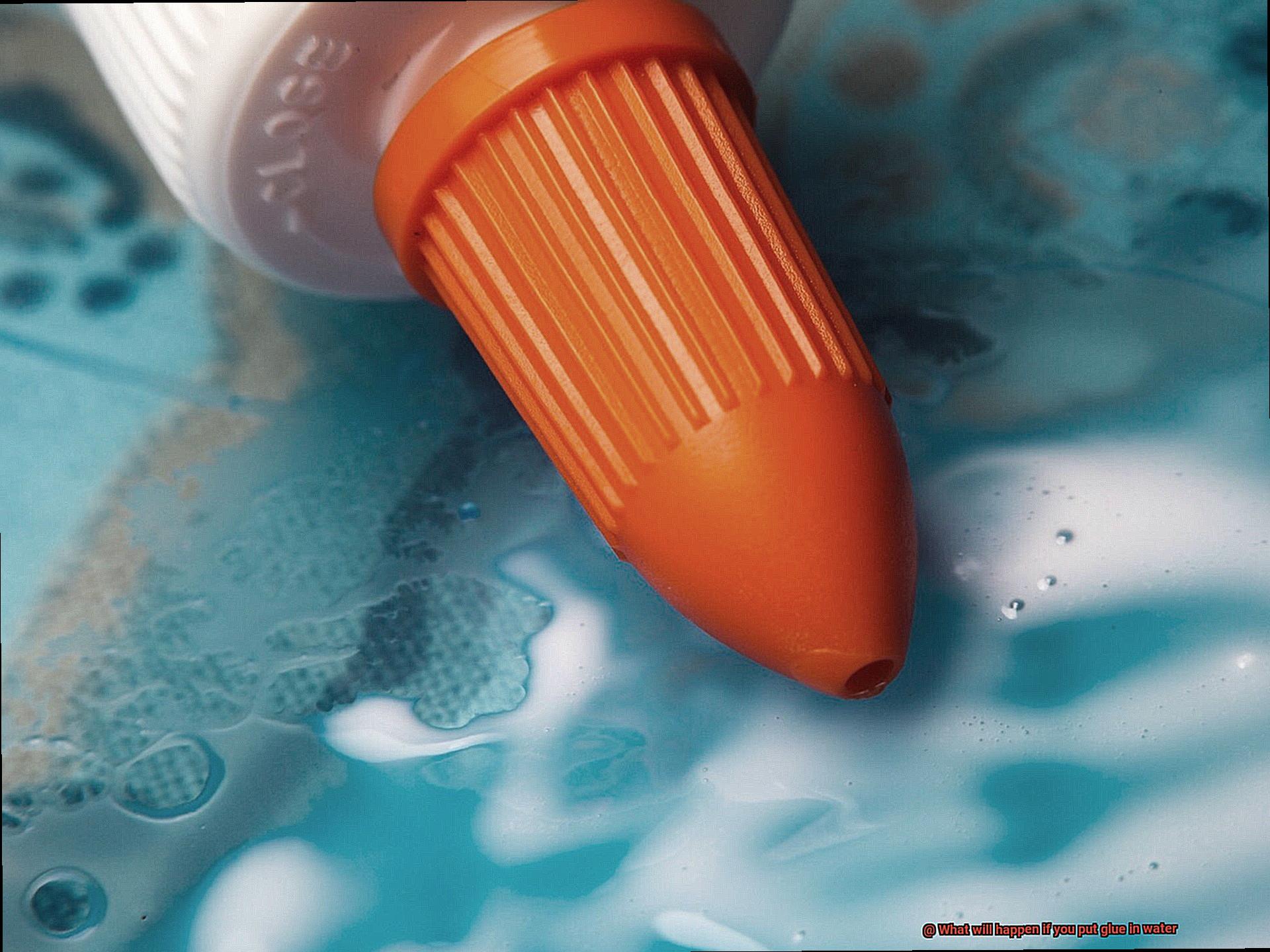
How Adding Water to Glue Can Change Its Viscosity
When water is mixed with glue, it can significantly impact its thickness or viscosity. Viscosity refers to the resistance of a liquid to flow. Adding water to glue can make it thinner, which can be useful in certain applications such as painting. However, it’s essential to note that adding too much water can cause the glue to lose its adhesive properties altogether.
The amount of water added to glue will determine how much the viscosity changes. A small amount of water will only slightly thin out the glue, while a larger amount of water will significantly decrease its viscosity. It’s crucial to be cautious when adding water to glue and not add too much, as this can cause it to lose its adhesive properties entirely.
Most types of glue are made up of polymers – long chains of molecules that bond together when they dry. When water is added to glue, it breaks up these chains and creates more space between the molecules, resulting in a thinner consistency. Different types of glue will react differently when mixed with water. For example, white school glue is water-soluble and will easily mix with water, while superglue is not soluble in water and will not react in the same way.
How Adding Too Much Water Can Affect the Adhesive Properties of Glue
Adding water to glue may seem like an easy solution for thinning its consistency, but be warned, adding too much water can drastically impact the adhesive properties of glue.
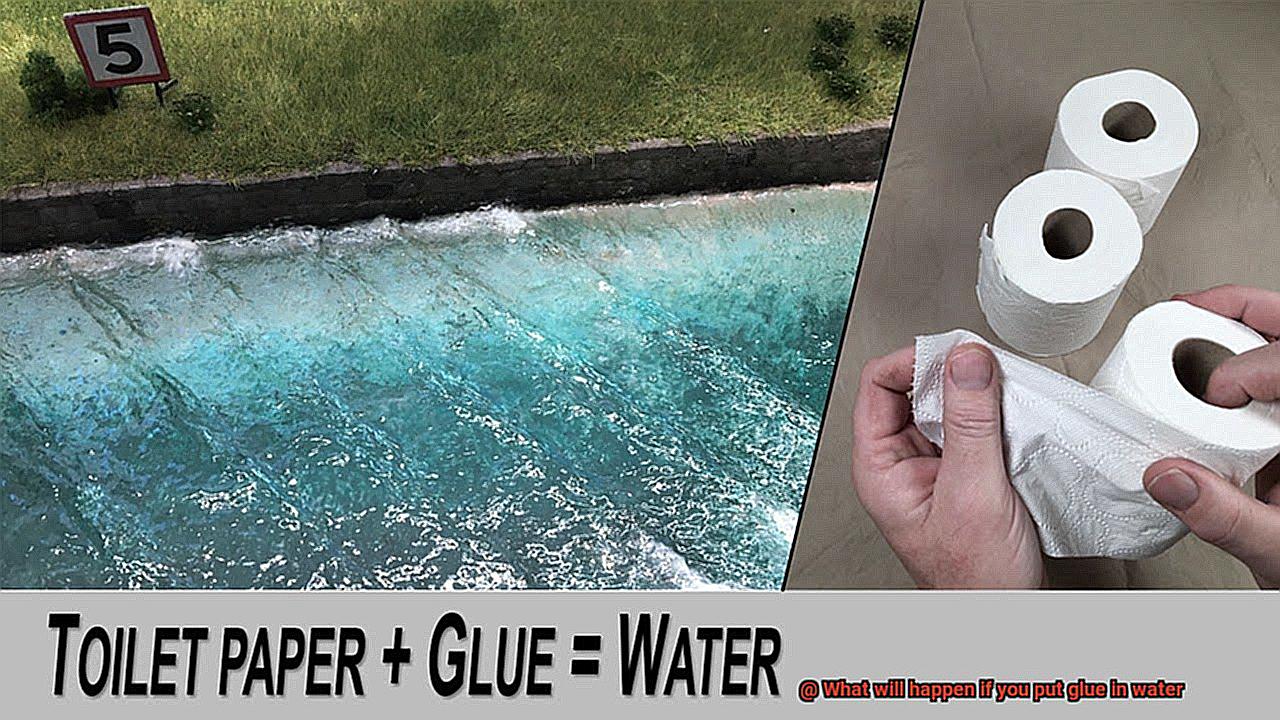
The bond strength of glue is one of the most significant properties affected by adding excess water. Glue relies on certain chemicals to bind together when it dries. When water is added in excess, these chemicals are diluted, resulting in reduced effectiveness and a weaker bond.
The drying time of glue is also impacted by adding too much water. Water slows down the drying process, which can be a major problem for projects that require immediate bonding, such as woodworking or construction.
In addition to bond strength and drying time, the excess water can also affect the surface quality and appearance of the glued surface. The surface can become bumpy or irregular, ruining the final appearance of the project.
Using Diluted Glue for Different Applications
Diluted glue might just be the answer you’re searching for. But before you start mixing water with glue, it’s important to understand the impact of dilution and how it can affect your project’s outcome.
Diluted glue can be used for various applications, such as paper mache or decoupage. However, adding too much water to your glue can make it thin, runny, and difficult to work with. On the other hand, if you don’t add enough water, the glue will be thick and spread unevenly.
To achieve the perfect consistency, mix equal parts of water and glue together. But remember, the ideal ratio may vary depending on the type of glue and the application.
It’s also essential to note that diluted glue may not have the same bond strength as undiluted glue. Thus, it may not be suitable for projects that require a strong bond, such as woodworking or construction.
-42-ku-3ti0″ >
Conclusion
In conclusion, mixing glue with water can lead to an intriguing chemical reaction that produces a new mixture with distinct characteristics. The outcome of this experiment is influenced by the amount of water used and the type of glue employed. Depending on these factors, the resulting mixture may vary from a thick paste to a runny liquid.
Glue is an adaptable adhesive that can bond different materials together. However, when mixed with water, its properties can shift, affecting its bonding strength. Some types of glue dissolve easily in water, while others are resistant to it. Water-soluble glues like PVA glue are ideal for projects that require frequent adjustments or corrections. On the other hand, non-water-soluble glues like superglue provide a robust bond that won’t be affected by moisture or water.
Adding too much water to glue can significantly impact its adhesive properties, reducing bond strength and drying time while affecting the surface quality and appearance of the glued surface. Nevertheless, diluted glue can be used for various applications such as paper mache or decoupage.
To sum up, comprehending how adding water affects glue is crucial when using it for different applications.

